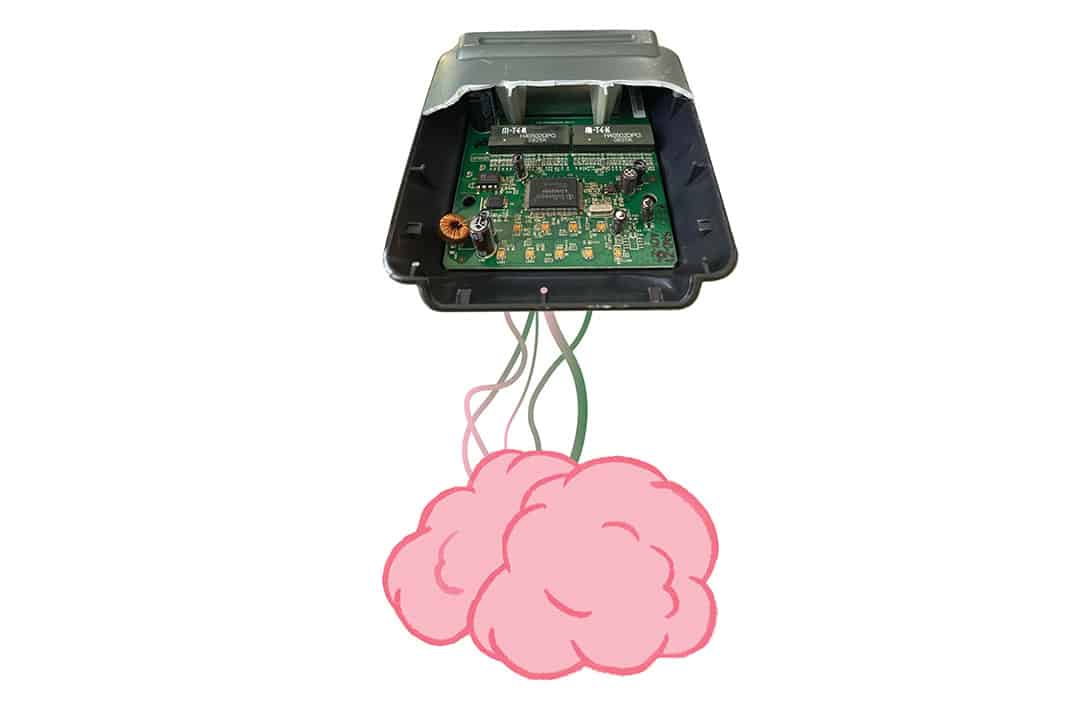Over the past several decades, neural prostheses and brain chips have shifted out of the realm of science fiction and become a legitimate possibility. In the early 2000s came the first demonstrations of real-time computer control by monkeys via neural prostheses, which rapidly developed to thought-controlled robotic arms in 2008. This control then shifted to humans within the next few years, allowing humans in trials to move robotic arms and carry out regular tasks on computers including opening and closing apps, texting, and even playing games. Until this point, however, most of the tests had been messy and filled with wires, making them impractical for wider applications.
What Neuralink has brought to the table is a lot of the same research, but entirely wireless and battery powered — something that could be implanted entirely into the brain. These chips work similarly to most methods of neuroelectrophysiological recording: they monitor certain patterns within neural pathways and correlate them to movements, which allows us to predict movements and use those pathways in studies.
The first demonstrations of these chips were done in pigs. The implants were able to accurately predict what the pigs were going to do based on the activation of their neurons. The data from these trials was then used to create experiments for monkeys. The rhesus macaque monkey, in particular, has been a staple for neurophysiological experiments. The Neuralink implant enabled these monkeys to play a virtual game of Pong, controlling where they wanted their paddles to go just by thinking of the movements.
Neuralink’s goal, though, has been to create implants that will be able to help disabled or paralyzed individuals regain control over their bodies, so how does this research help us attain that goal?
To understand this, it can be helpful to think of the nervous system as a collection of circuits, with different circuits controlling different actions, sensations, and cognitive capabilities. Paralysis and neurophysiological diseases often include damage to a component of the circuit, which prevents messages from being sent accurately to where they need to go.
The Neuralink chip would replace that damaged component. It would understand signals coming toward a certain body part and output them as actions or movements. The trials we’ve seen so far focus on understanding that input, and creating an output that is outside the body, which is useful for brain-computer interfaces. However, when the chip is used to repair neurophysiological diseases, the output will be the action or movement the individual intended to carry out, provided nothing goes wrong.
We are at a strong tipping point for this technology, as Neuralink hopes to start human trials soon. Once such technology can help manage disabilities for those who require it, it is inevitable that there will be consumer demand for that kind of assistive technology.
One of the major concerns with Neuralink, and neural implants in general, is their upkeep and maintenance. This concern became a reality for many users of a similar prosthesis known as Argus I, made by Second Sight Medical Products.
Argus implants functioned to provide a sort of bionic vision for those who had lost it, allowing them to see and function as if they had regular vision. These implants were fully supported by the staff of Second Sight, and even received regular updates as the technology improved. However, in 2020, the company nearly went bankrupt and discontinued service for the Argus implants, leaving any implants that may get damaged in the future with no possibility of repair. For many Argus users, their implants still function, but they are worried that if those implants are damaged, there will be no way to repair their vision, short of waiting for another company to develop similar implants.
Another concern about these brain chips is an ethical one for people who question the future of this technology in for-profit companies. While Neuralink remains focused on providing care for disabled and paralyzed individuals at the moment, researchers have pointed out that such a “market is small [and] the devices are expensive.”
There would be a bigger market for more generalized brain-computer interfaces, which wouldn’t be all too bad, but its potential for data farming for targeted advertising appears to be more concerning. In recent years, large corporations such as Facebook and Google have peddled their services for free, but are silently tracking our data. If Neuralink’s chip is able to track literally every thought and action you carry out, data mining could potentially reach a whole new level of invasiveness and exploitation.
The company has also faced controversy over allegations of animal cruelty and negligence after the death of most of the monkeys involved in its tests, which occurred at the University of California, Davis. Neuralink has denied the allegations, saying that it followed all necessary protocols.
This technology also brings with it a whole host of questions from several fields. How is such a device going to combat hackers, for example? Tesla’s self-driving cars have already seen security flaws and have resulted in deaths, so how catastrophic could a hacked implant be in an individual? Some philosophical concerns also arise pertaining to where humanity ends and technology begins, and how many parts of a human could be replaced before they’re considered more machine than human.
Some of these questions are quite a while away from needing answers, but they are ones we might have to face sooner than we expect. This wondrous technology is still in its infancy, but it’s growing fast, as is its potential.


